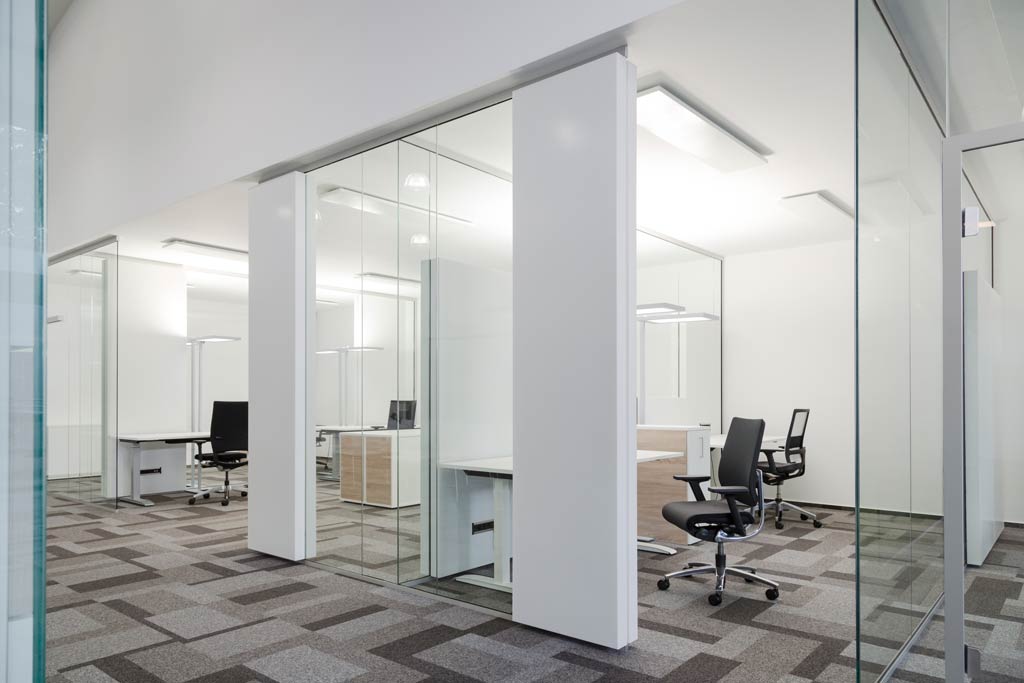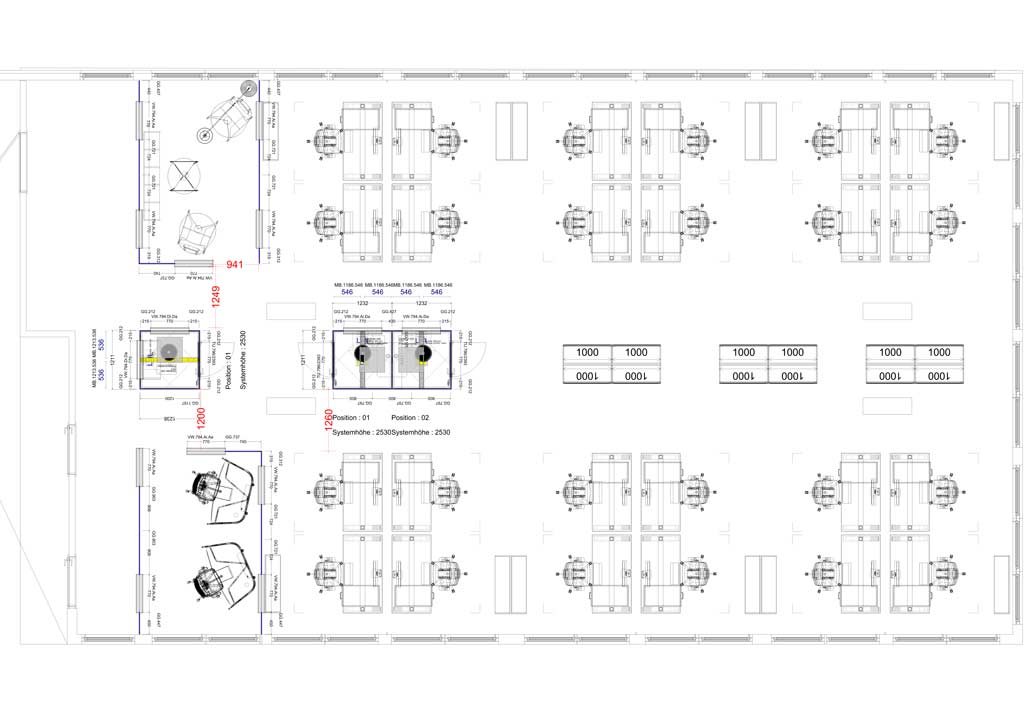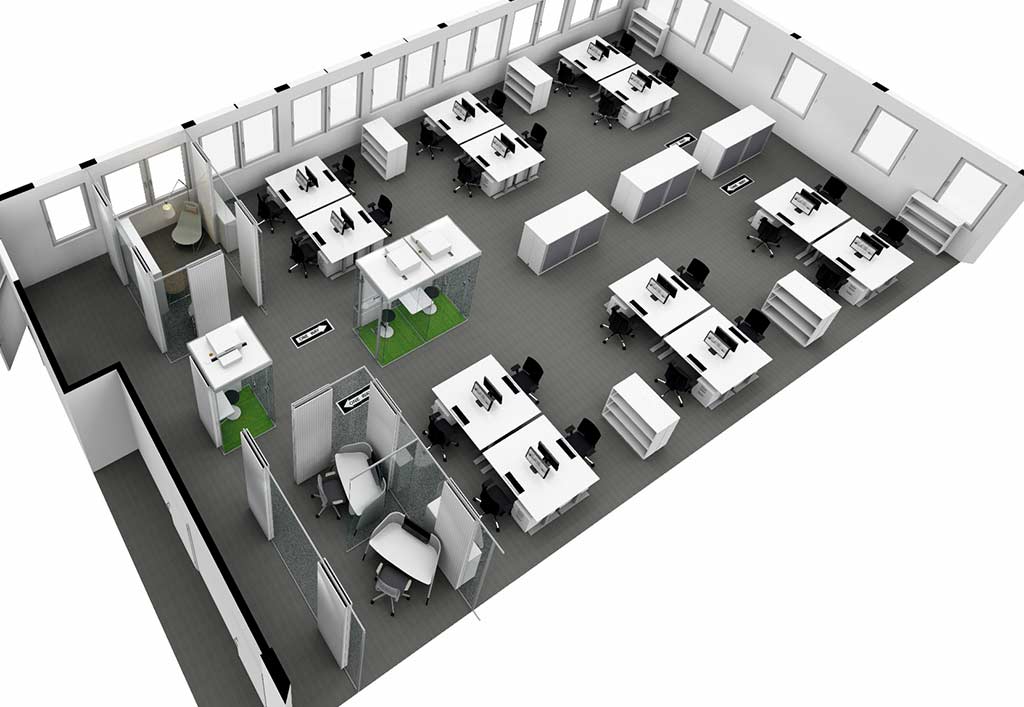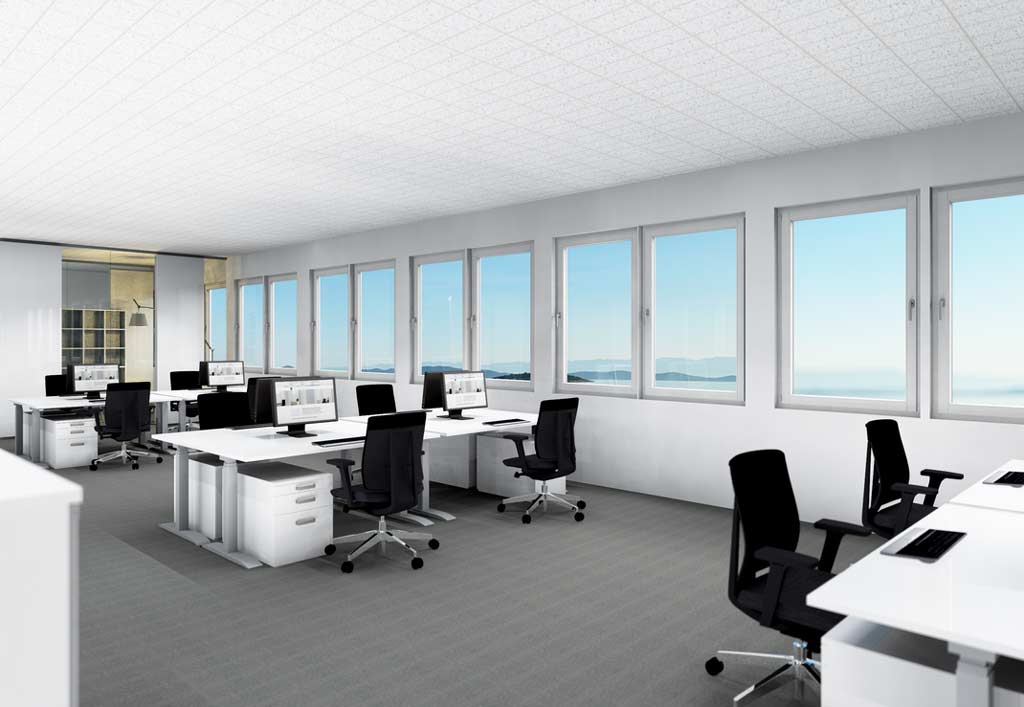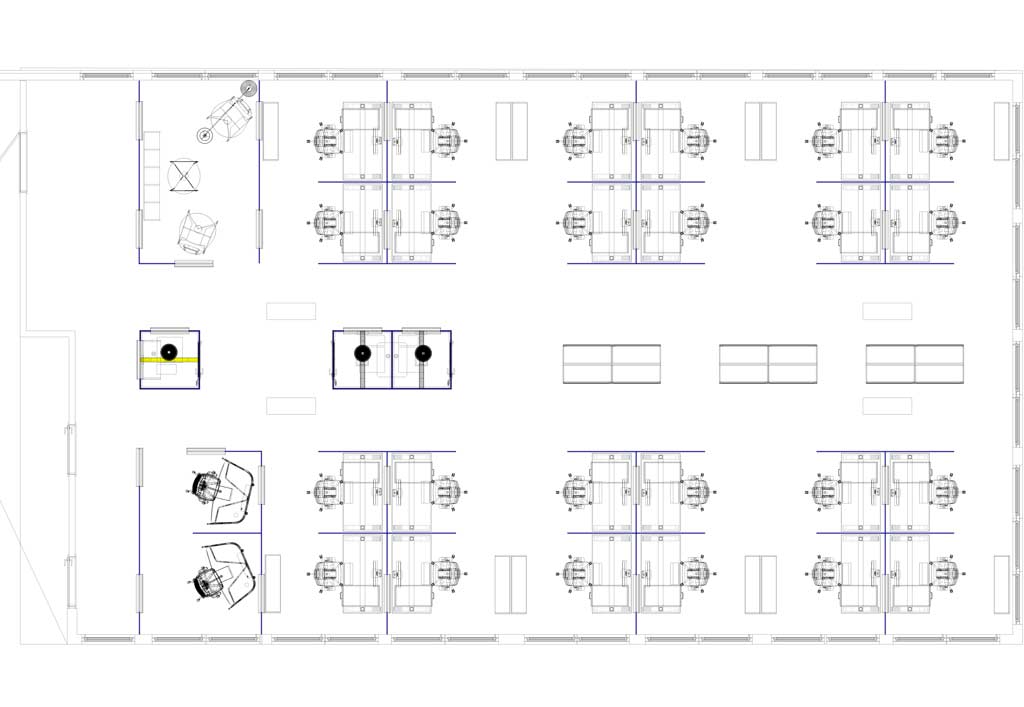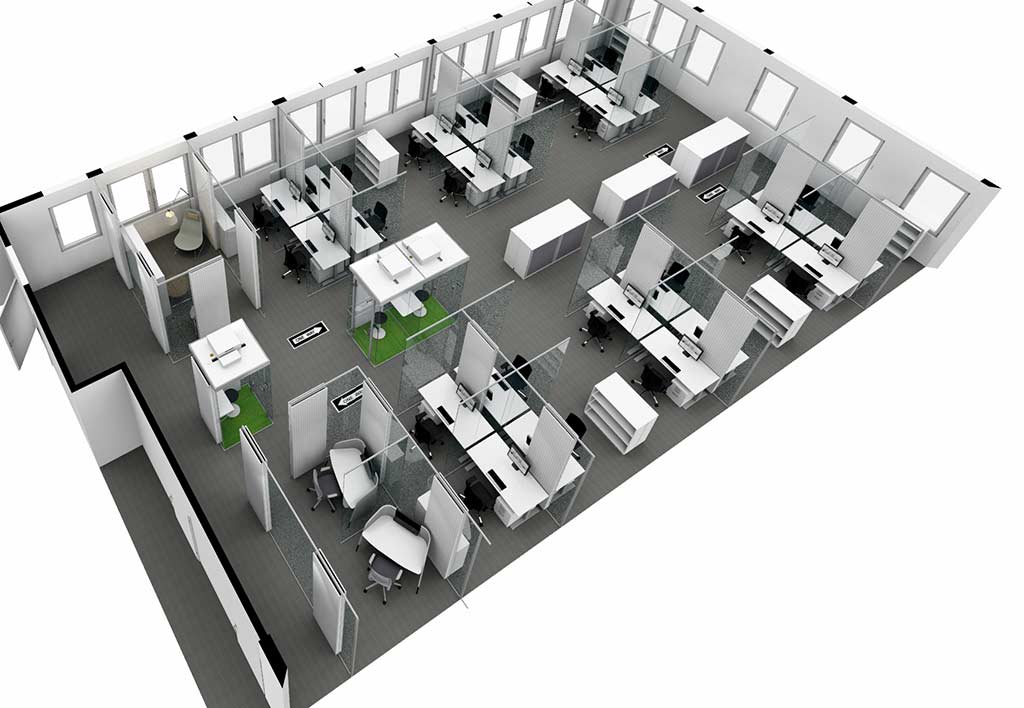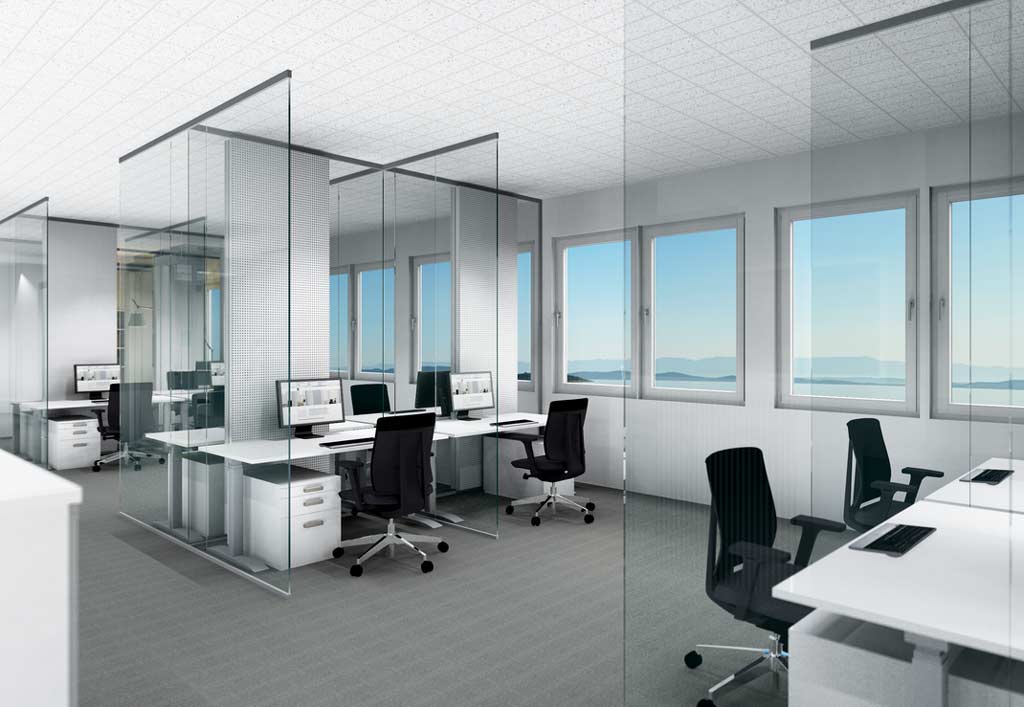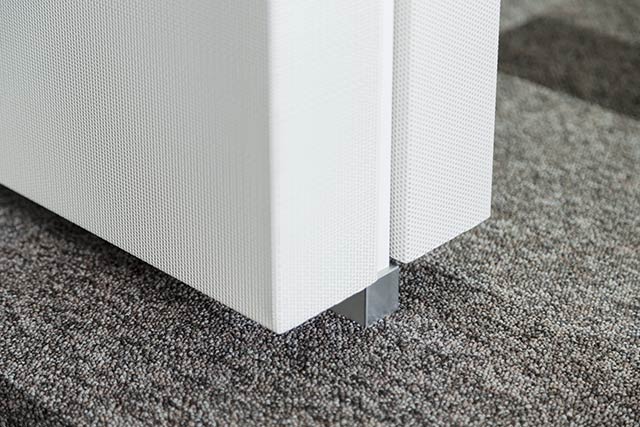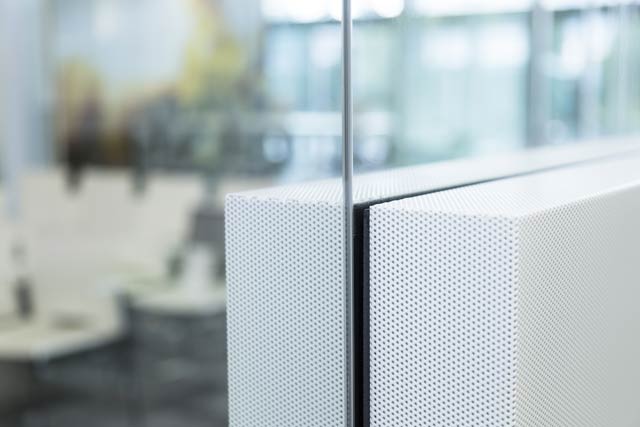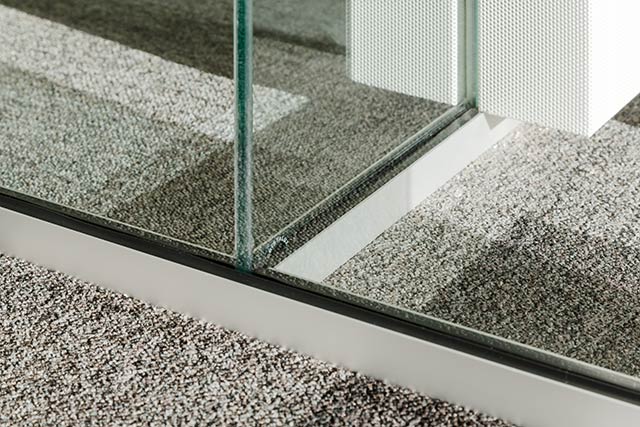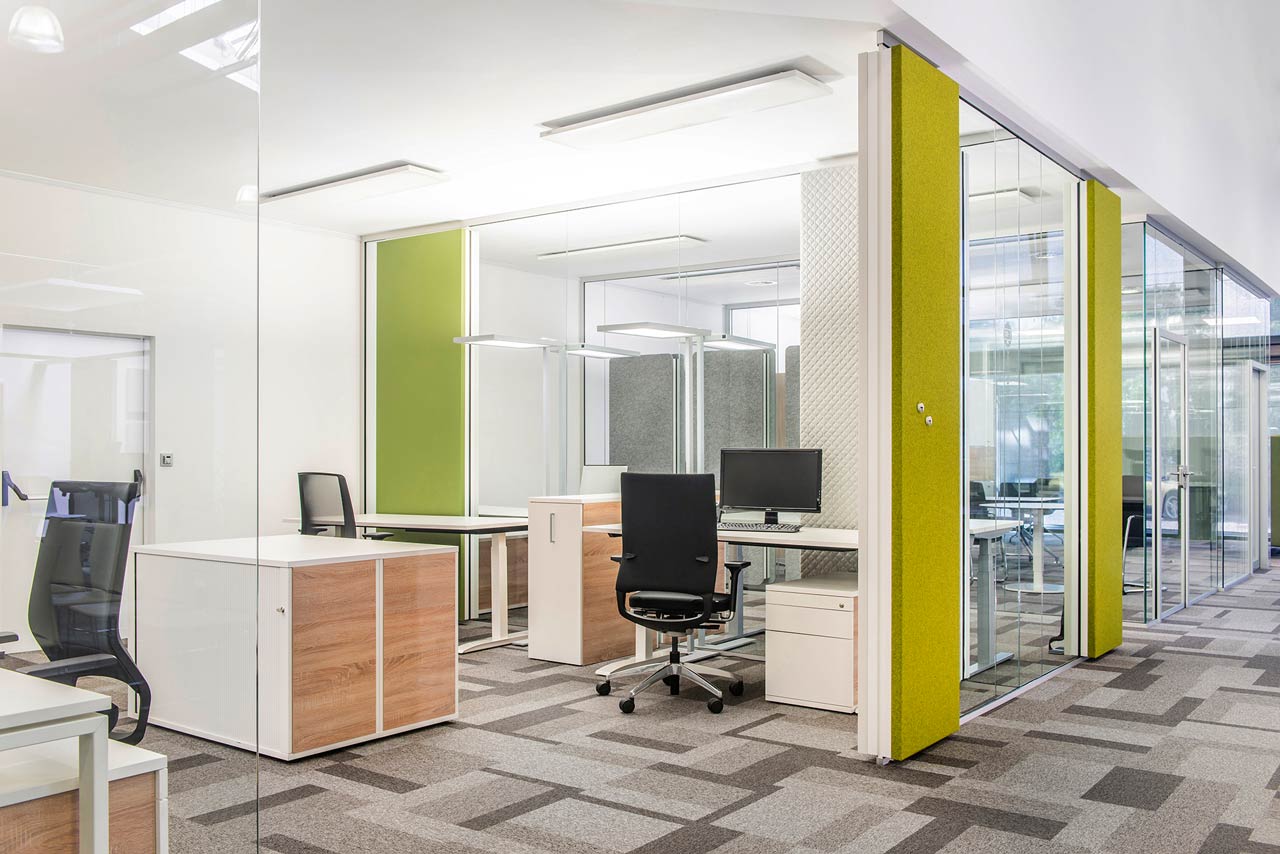
Glass acoustic module - Silent module - Sound screen - Acoustic module
The silentUNIT glass acoustic system is an acoustic room partitioning system. The quiet modules are ideal for the sustainable acoustic refurbishment of open-plan offices. The sound screens optimize the reverberation time and reduce the direct propagation of sound, so that disruptive speech information is reliably reduced. As a room partitioning system, the quiet module structures the space without restricting transparency and the open office culture. At the same time, the glass acoustic system is an effective acoustic solution. silentUNIT is a construction of frameless glass surfaces and high-performance absorbers. The glass surfaces made of laminated safety glass (LSG) or toughened safety glass (ESG) provide good sound insulation. The integrated high-performance absorbers absorb the sound. With the combination of sound shielding and absorption, the quiet module optimizes the acoustics in the office.
Acoustic solution and transparency
- Transparency in open space
- Quiet in the open space
- Good sound insulation
- Good acoustics, short reverberation time
- Containment of direct sound propagation
- RAL absorber, fabric or veneer
- Electrification possible
- Adjustable acoustics
- Glass design as required
- Non-combustible design as an option
- Light integration as an option
- Room system as an alternative to the ceiling canopy
Back to the metropolitan area despite the coronavirus crisis?
If you follow the reports in the press and on the internet at the moment, the coronavirus pandemic seems to be making it impossible to return to the office. From our point of view, this is reason enough to take up this train of thought and really think it through to the end. Let's compare the open-plan office, the open space, with the closed forms of cellular office and group office. Doesn't the open office space offer much more room to maintain the required minimum distances? We think so! Just think of the cramped meetings in the usual cubicle office corridors. Rarely is such a corridor wider than 1.40 m. It is simply impossible to keep a safe distance here.
The situation is completely different in open-plan offices. Here, the areas are much more spacious. The central zone can be used to design traffic routes as one-way streets so that direct encounters are largely ruled out. It is much easier to avoid each other. A moderate settlement of workplaces should therefore be feasible without any problems.
silentUNIT makes it possible to return to open space, despite Corona!
Problems could arise at the workstation itself. The usual 4-person table blocks hardly allow for the necessary spacing. A significant increase in spacing is not recommended for ecological or economic reasons. Here you should consider the silentUNIT quiet module. These glass acoustic screens create the necessary distance between employees and hygienically shield colleagues from each other. At the same time, they eliminate acoustic problems in open spaces. You don't have to sacrifice transparency or direct visual contact between colleagues. Large glass surfaces maintain this important advantage of the open space. This eye contact is crucial for fast and effective communication, especially in times of social distancing. All surfaces are easy to clean and resistant to disinfectants.
Of course, not all employees should be present at the same time, but this open office offers advantages such as desk sharing, agile working and territorial working, especially when a healthy alternation of "home office" and "presence culture", i.e. working in the office, seems necessary and sensible. It is precisely this office space form that allows for all the necessary scenarios to get back to "normality".
Sound screens reduce the direct propagation of sound and optimize the reverberation time
The acoustic solution supplements all-glass walls in acoustically sensible positions with absorber solutions. These broadband absorbers or high-performance absorbers comply with acoustic classification A in accordance with DIN EN 11654. The absorbers are therefore considered to be highly sound-absorbent and significantly reduce the reverberation time. By using silentUNIT as an acoustic solution, office planning achieves a considerable reduction in sound propagation at relevant points and improves the room acoustics through customized solutions. The sound from technical areas, meeting points and work cafés can be effectively shielded acoustically with the quiet modules. The soundproofing of different teams enables spatially efficient and dense office planning without these teams disturbing each other. The open-plan office is kept together visually. The visual relationships between colleagues are deliberately strengthened. The character of a modern, open, transparent and communicative office space is retained. The glass acoustics as a room system sustainably improves the room acoustics.
Glass Acoustics reduces the sound level and enables efficient occupancy with optimum acoustics in the office
silentUNIT acoustically and creatively supports your efforts to occupy office space more densely, to design the function of the office space efficiently and thus to optimize costs. The silentUNIT glass acoustic system excludes disruptive sound sources without having to install partition walls in the conventional sense and without creating closed rooms. As a rule, the acoustic sound screen is positioned across the façade, between the work groups and separates them acoustically. Within the team, the acoustic module reduces the reverberation time and therefore the volume.
As a room system, silentUNIT organizes the office space and your teams. The highly sound-absorbing A-Class absorbers optimize the acoustics in the office sustainably through sound screens. The system is usually installed ceiling-high, thus guaranteeing maximum effectiveness. If a ceiling connection is not possible, the 3/4-height truss system offers solutions. Last but not least, the acoustic sound screen is easy to electrify and enables workstations to be supplied with power and data.
Consideration of alternative acoustic solutions for office planning - concept comparison
For some office planners, the question arises on closer inspection: why not simply install conventional partition walls and create group offices? This would emphasize the effect of sound shielding and sound insulation even more. The answer is simple. Yes, the sound insulation from office to office would be better. However, the acoustics in the group rooms would be significantly worse. Even the acoustic ceiling as a ceiling absorber could not change this. The intelligibility of syllables in a small room can hardly be reduced and will always be a nuisance.
This syllable intelligibility is completely different in the "noise swamp" of a large office space. The spoken word does not carry that far. So why not simply install ceiling sails or other ceiling absorbers and absorb the sound? Here, too, the answer is obvious. The sound sources are then not sufficiently contained. Ceiling absorbers alone cannot create optimum acoustic conditions.
Office planners are therefore well advised to rely on acoustically activated room partitioning and to adapt this sensibly to the requirements of the space. Ceiling absorbers can certainly play a complementary role here.

